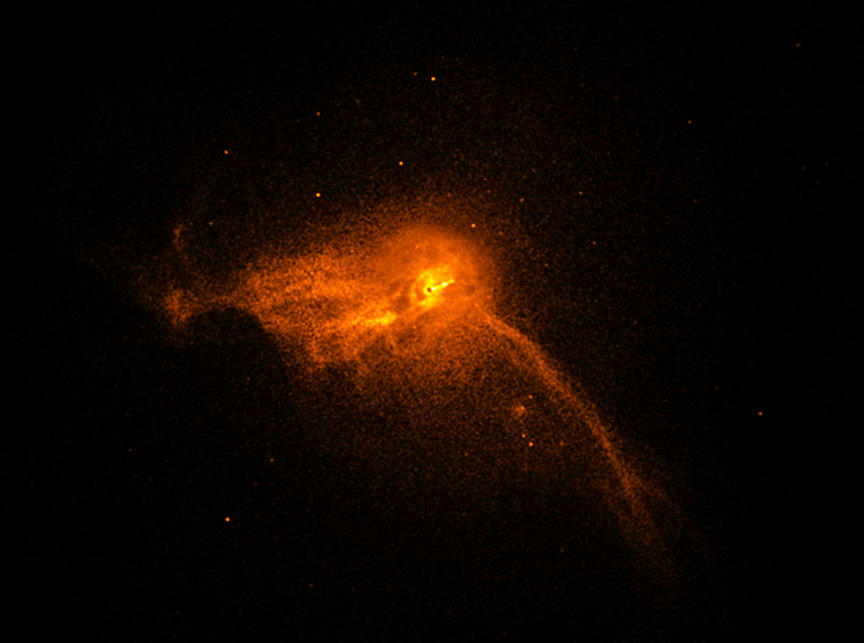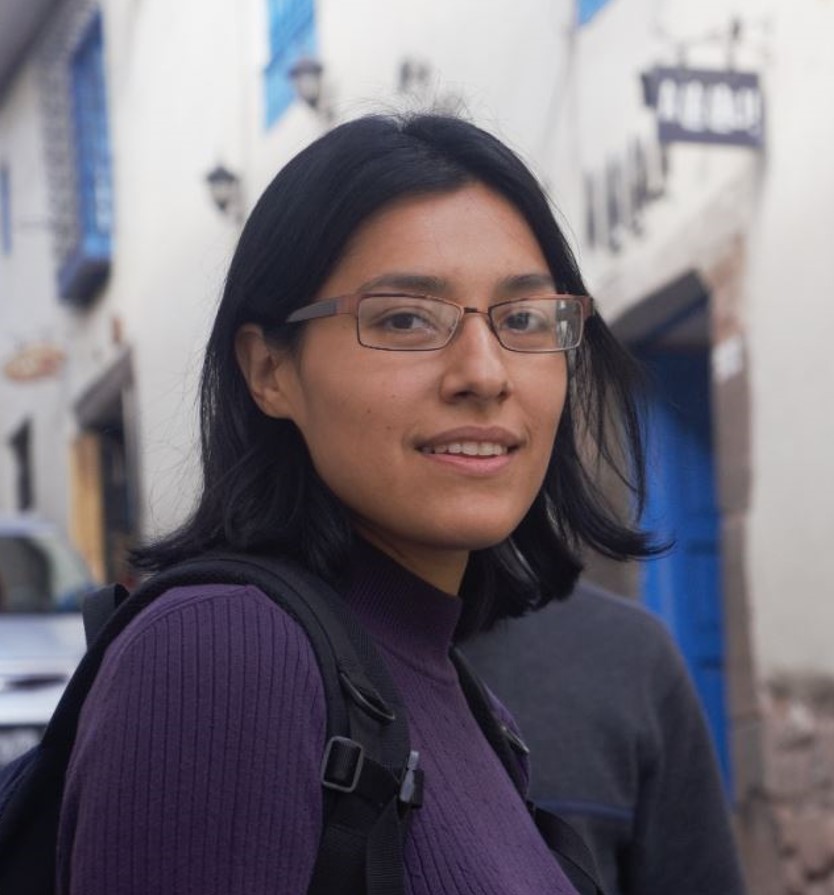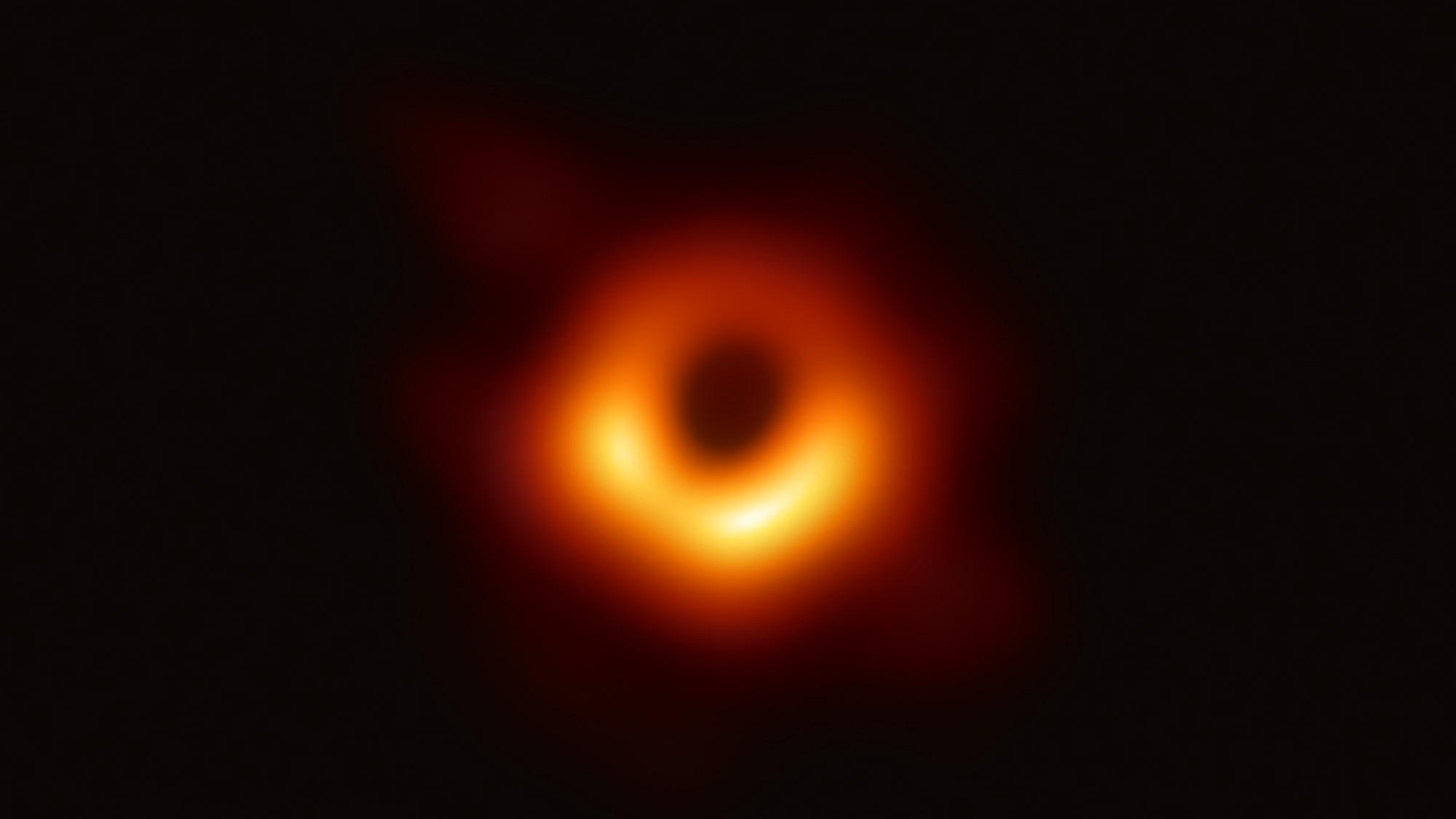See the X-ray Neighborhood of the First-Ever Black Hole Photo in This Space Telescope View
The orange speckles in a new image from NASA's Chandra X-ray Observatory add another dimension to the first-ever image of a black hole. This supplemental picture offers a zoomed-out perspective of the same tremendously dense structure of the now-viral image, helping scientists learn more about what's happening in the black hole's neighborhood.
The supermassive black hole starring in both pictures is located in the elliptical galaxy Messier 87. It's a behemoth; this black hole boasts a mass several billion times greater than that of Earth's sun.
To offer a little more perspective about this structure and the powerful effect it has on the matter around it, scientists collaborating with the Event Horizon Telescope (EHT) captured a different view of this same target. They did so in tandem with EHT observations made in April 2017, according to a statement published the same day as the black hole picture.
Related: Historic First Images of a Black Hole Show Einstein Was Right (Again)
Related: How the Event Horizon Telescope Hunts for Black Hole Silhouettes
To capture the incredible image of a supermassive black hole's shadow, the EHT project gathered data from a global array of radio antennas. On Wednesday (April 10), the incredible feat of finally imaging this enigmatic structure astonished scientists and the public alike.
But another instrument in space, Chandra, has been gazing at the black hole's home galaxy over the last two decades, collecting data in a different wavelength: X-rays. Astronomers had Chandra stare at Messier 87 (M87) for about 30,000 seconds, or roughly 8.3 hours, as the EHT dish network took its observations from the ground.
The four ultrasensitive mirrors that Chandra carries in its orbit around Earth observed the X-ray radiation of multimillion-degree gas shrouding M87.
Breaking space news, the latest updates on rocket launches, skywatching events and more!
These X-rays came from the high-energy particles the black hole was flinging into space. The material resulted in a jet shape which extends over 1,000 light years from the center of M87, Chandra representatives said in the statement. Viewers can observe the jet more clearly in the enlarged image inset.
Black holes are superdense structures with tremendous gravitational pull, and past a black hole's threshold, the event horizon, even light cannot escape.
Every galaxy is thought to host a supermassive black hole, like this one within M87, at its center.

- Historic First Images of a Black Hole Show Einstein Was Right (Again)
- 83 Gargantuan Black Holes Spotted Guzzling Down Dinner at the Edge of the Universe
- How Do Particles Escape Black Holes? Supercomputers May Have the Answer
Follow Doris Elin Salazar on Twitter @salazar_elin. Follow us on Twitter @Spacedotcom and on Facebook.

Doris is a science journalist and Space.com contributor. She received a B.A. in Sociology and Communications at Fordham University in New York City. Her first work was published in collaboration with London Mining Network, where her love of science writing was born. Her passion for astronomy started as a kid when she helped her sister build a model solar system in the Bronx. She got her first shot at astronomy writing as a Space.com editorial intern and continues to write about all things cosmic for the website. Doris has also written about microscopic plant life for Scientific American’s website and about whale calls for their print magazine. She has also written about ancient humans for Inverse, with stories ranging from how to recreate Pompeii’s cuisine to how to map the Polynesian expansion through genomics. She currently shares her home with two rabbits. Follow her on twitter at @salazar_elin.


